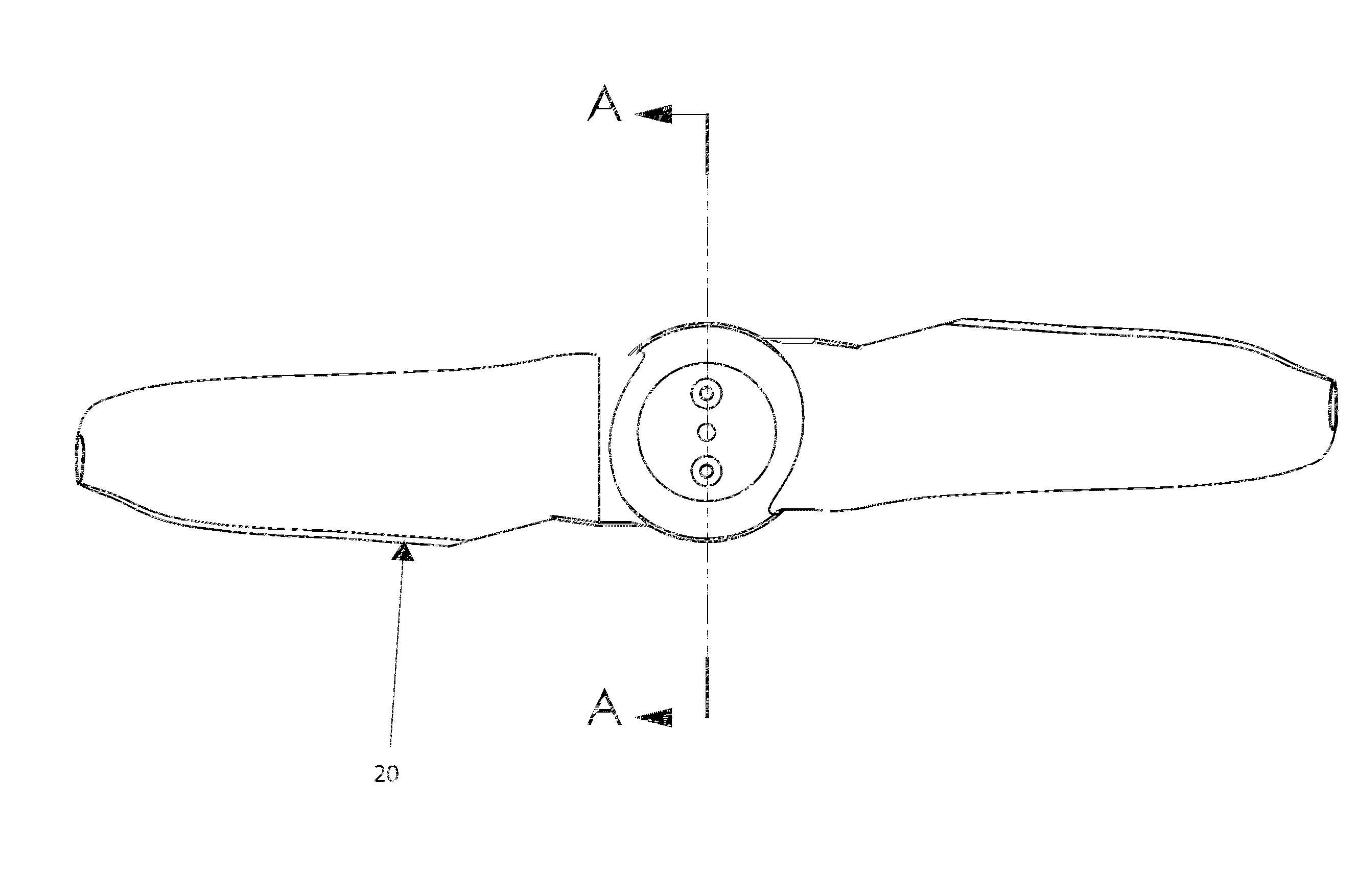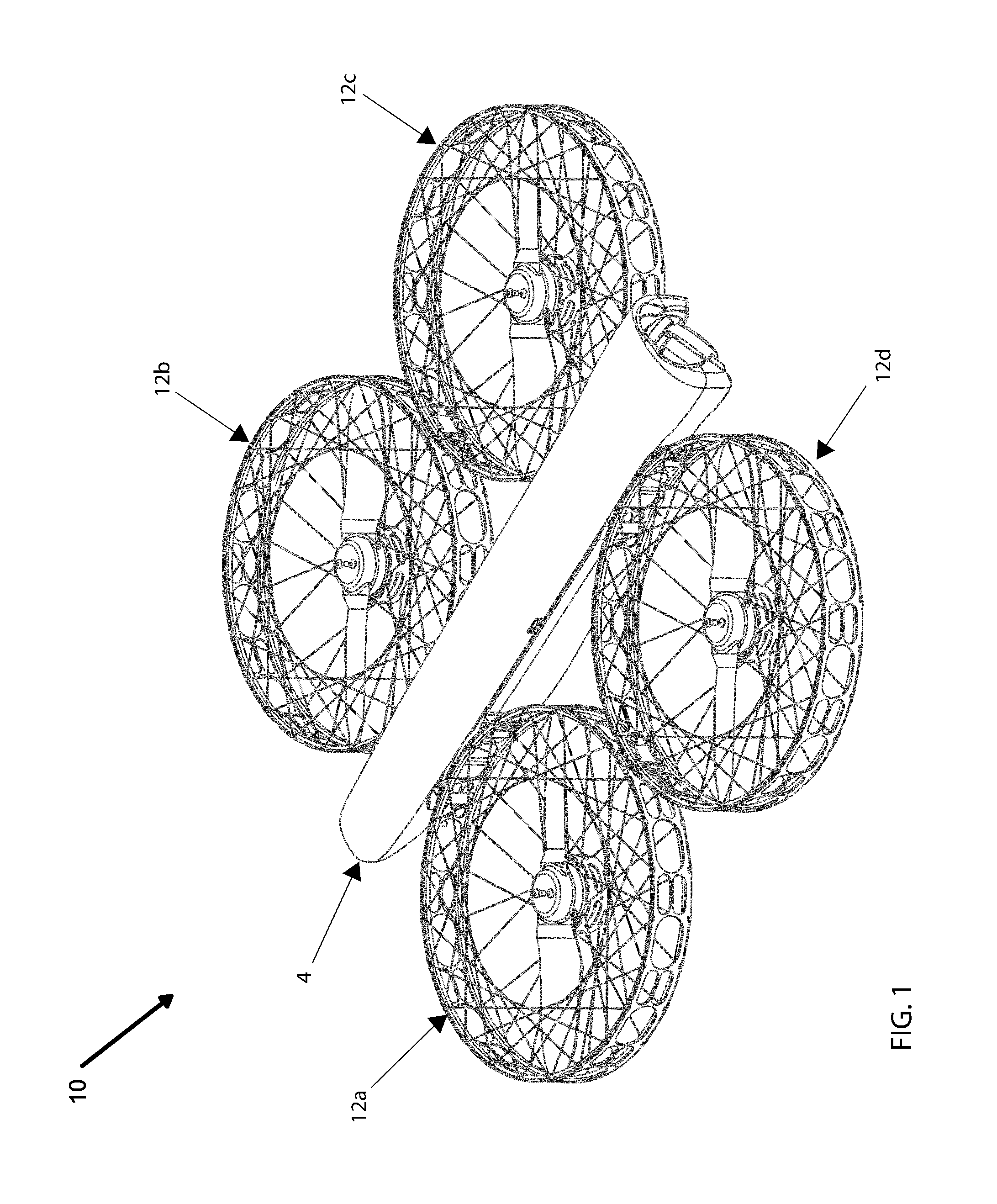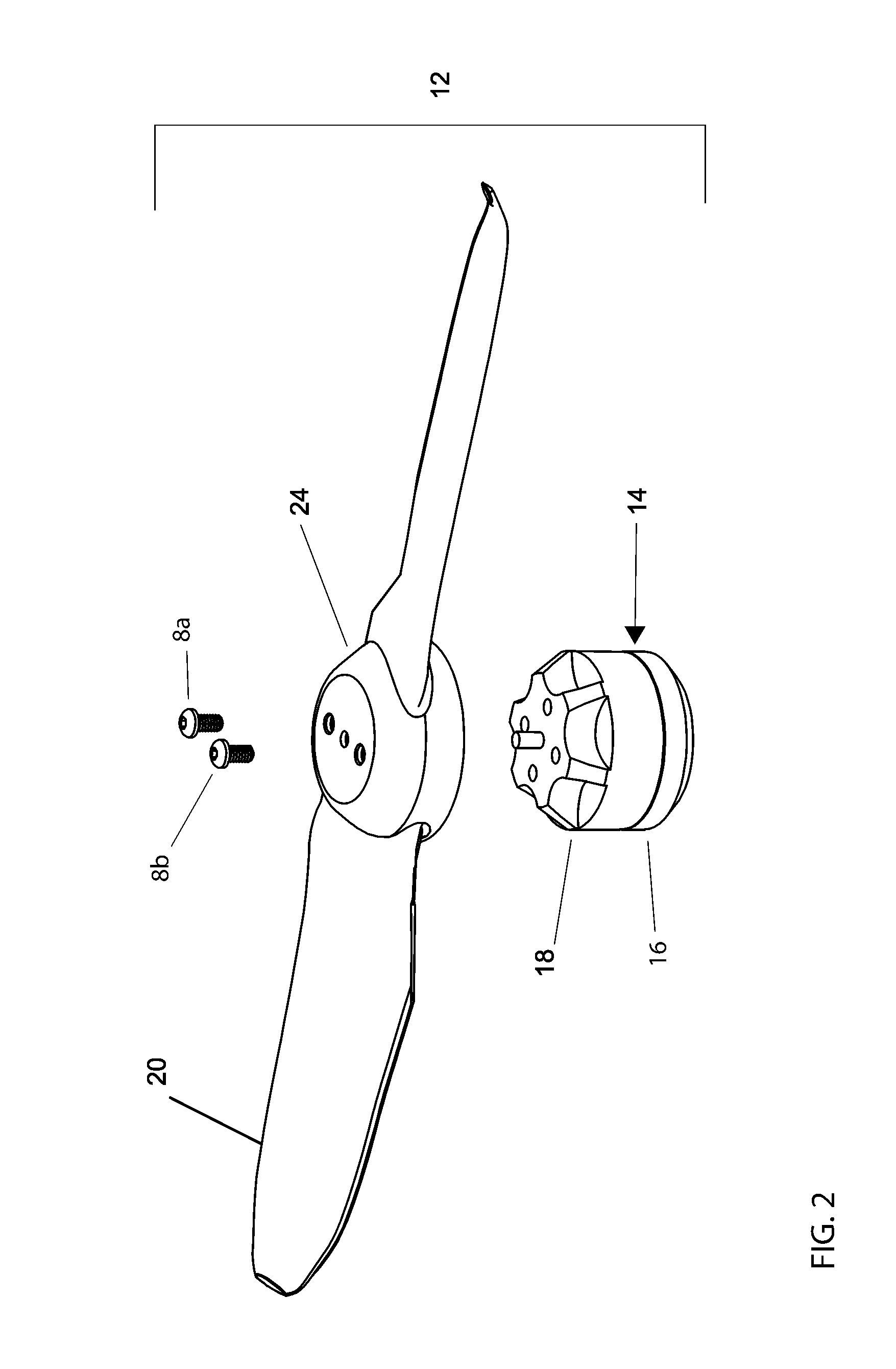Propeller-motor assembly for efficient thermal dissipation
a technology of motor assembly and motor, which is applied in the direction of mechanical energy handling, transportation and packaging, and efficient propulsion technologies, etc., can solve the problems of increasing the speed of motor no-load, affecting the performance and operation of generating heat for most electronic and electrical systems and devices. , to achieve the effect of increasing the rate of convective heat transfer
- Summary
- Abstract
- Description
- Claims
- Application Information
AI Technical Summary
Benefits of technology
Problems solved by technology
Method used
Image
Examples
Embodiment Construction
[0030]Embodiments described herein relate to the management of thermal energy generated in electric motors during their operation. In certain embodiments, the thermal management can be used in conjunction with motors powering propellers, such as those used in quadcopters and other UAVs.
[0031]FIG. 1 is a perspective view of an exemplary unmanned aerial vehicle. The exemplary unmanned aerial vehicle (hereafter “UAV”) is, in the illustrated embodiment, a quadcopter 10. UAV quadcopter 10 includes four thrust pods 12a-d secured relative to a body 4, with each thrust pod including a propeller drive assembly including a motor and a propeller. In other embodiments, however, UAVs having additional or fewer propellers can be used. Additional details of UAVs such as quadcopter 10 are described in U.S. application Ser. No. 14 / 990,057, filed Jan. 7, 2016 and entitled “UNMANNED AERIAL VEHICLE WITH PROPELLER PROTECTION AND HIGH IMPACT-SURVIVABILITY,” the disclosure of which is hereby incorporated ...
PUM
 Login to View More
Login to View More Abstract
Description
Claims
Application Information
 Login to View More
Login to View More - R&D
- Intellectual Property
- Life Sciences
- Materials
- Tech Scout
- Unparalleled Data Quality
- Higher Quality Content
- 60% Fewer Hallucinations
Browse by: Latest US Patents, China's latest patents, Technical Efficacy Thesaurus, Application Domain, Technology Topic, Popular Technical Reports.
© 2025 PatSnap. All rights reserved.Legal|Privacy policy|Modern Slavery Act Transparency Statement|Sitemap|About US| Contact US: help@patsnap.com



